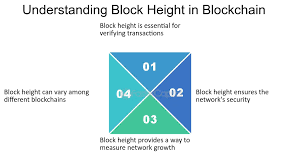In the context of the Blockchain, the term ‘Block Height’ basically means the number of blocks that have been placed on top of the first or the initial block commonly referred to as the Genesis block. It is an important parameter in blockchain technology as it can be used to the status and history of the blockchain. It is like taking the height of a tower and trying to do it by counting the number of blocks of that tower.
In This Post
How Block Height Works
Each blockchain is a link of blocks where each block is a set of the transaction and its information. When a new block is added, the block height goes up by one. If there are 100 blocks in total, the block height is 100.
It reveals how advanced the blockchain is and this commences from the initial block known as the genesis block. In the Bitcoin blockchain, we call the first block the Genesis block, and it’s block zero. The next block is one, then two, and so on. As we add more blocks, the blockchain becomes longer.

Different Blockchain Networks
In blockchain networks like Bitcoin and Ethereum, blocks grow at different speeds. Bitcoin adds a new block every 10 minutes, and each block has a size limit for transactions set by the network. In the meantime, Ethereum has a faster blockchain and creates a new block approximately within 12 to 14 seconds.
Why It is Important
Block height is not counting the blocks; it’s counting how many blocks the blockchain needs to be safe. Adding a new block strengthens the whole chain because changing one block disrupts the rest. This is one reason why it is important—it helps keep the blockchain safe from hackers.
Block Height in Forex and Crypto Trading
Block height shows you how quickly transactions get confirmed when you trade Bitcoin or other coins. For instance, if you see that it is not growing as fast as it used to, then it may be congested, and therefore your transaction may take time to get completed. With this information, traders can make decisions on its operations including purchases, sales, or the transfer of its assets.



